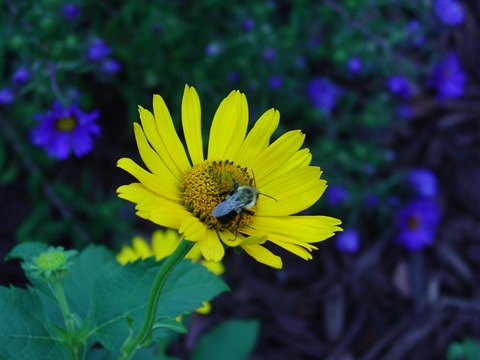| Cultural Needs |
 If you are thinking about starting your own
native plants from seed, a few important tips may be useful.
Seeds of many native plant species are dormant when
initially shed from the mother plant. Dormant seed is viable
(alive) but will not germinate well in an optimal
germination environment. In nature, dormancy prevents seeds
from germinating at times when the prevailing upcoming
weather/season is not apt to allow the plant to reach
maturity, such as winter or drought periods.
If you are thinking about starting your own
native plants from seed, a few important tips may be useful.
Seeds of many native plant species are dormant when
initially shed from the mother plant. Dormant seed is viable
(alive) but will not germinate well in an optimal
germination environment. In nature, dormancy prevents seeds
from germinating at times when the prevailing upcoming
weather/season is not apt to allow the plant to reach
maturity, such as winter or drought periods.However, when cultivating plants from seeds, dormancy is undesirable because it greatly reduces or totally prevents germination of seeds. Fortunately, we can simulate natural conditions to break dormancy in seeds. Two techniques commonly used to break dormancy include stratification and scarification. In stratification, seeds are treated with cold and often moist conditions. In scarification, seed coats are broken or scratched via sandpaper or soaks in concentrated acids. Requirements for these treatments vary with individual species so it is best to check resources with information about breaking seed dormancy for native species. Information is available from several sources including books, websites and native plant nurseries (the catalog of Prairie Moon Nursery has an especially informative section on breaking seed dormancy).
Once dormancy is broken and seeds are germinating successfully, native plants still may have other unique requirements for their culture. For example, many native species establish deep root systems, so often it is advisable to use deep containers that allow for their more natural development of roots. Containers used to start tree seedlings often are desirable even for herbaceous native species. Attention also should be given to simulate soil conditions found in the natural areas where the native species grows relative to pH and drainage. However, if produced in greenhouses where still in containers, native species may require care similar to other not native species relative to water, fertilizer, and pest control. A universal care recommendation cannot be made as it varies for each individual species. Information relative to propagation for individual species can be found in books and journals.
 Information about
fruits, seeds and seedlings
Information about
fruits, seeds and seedlings